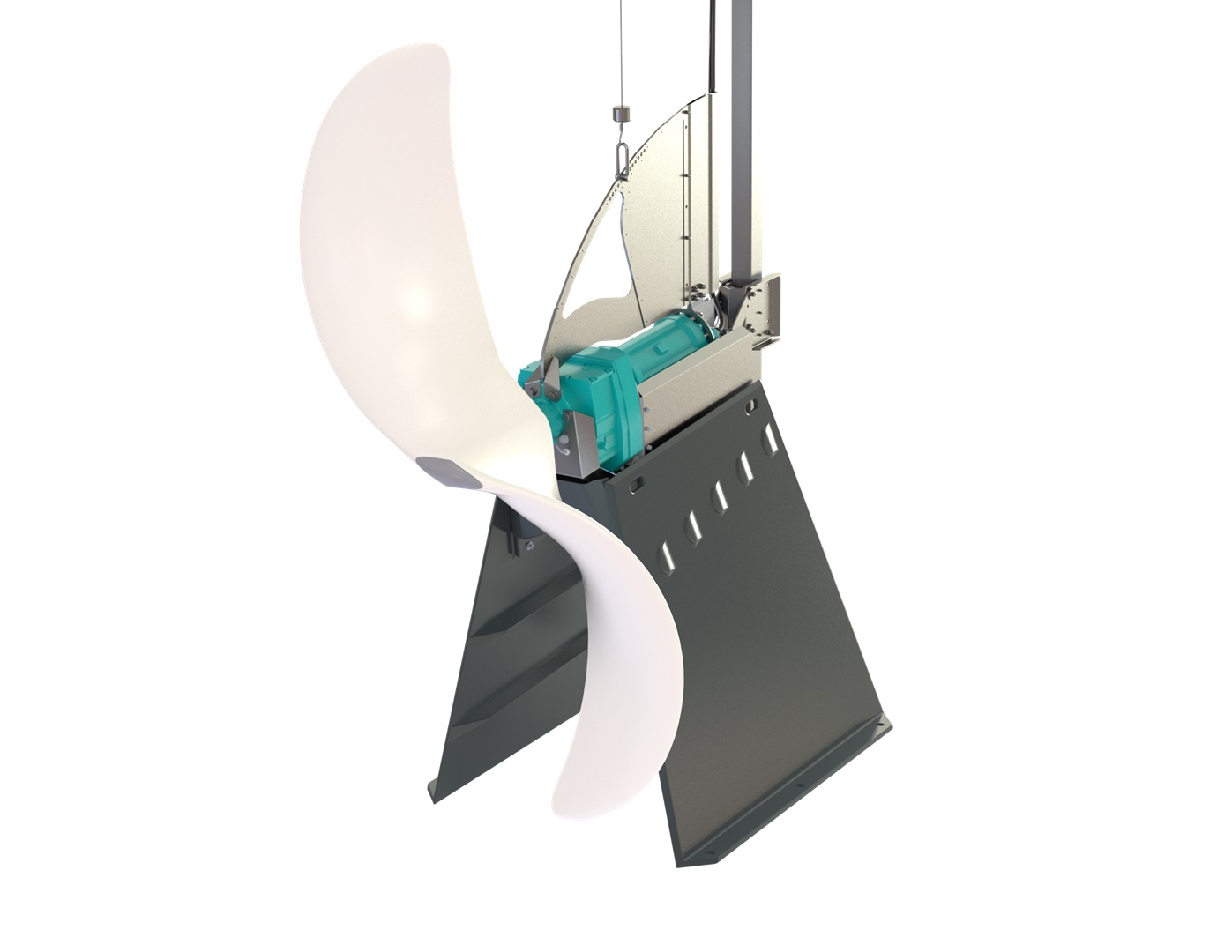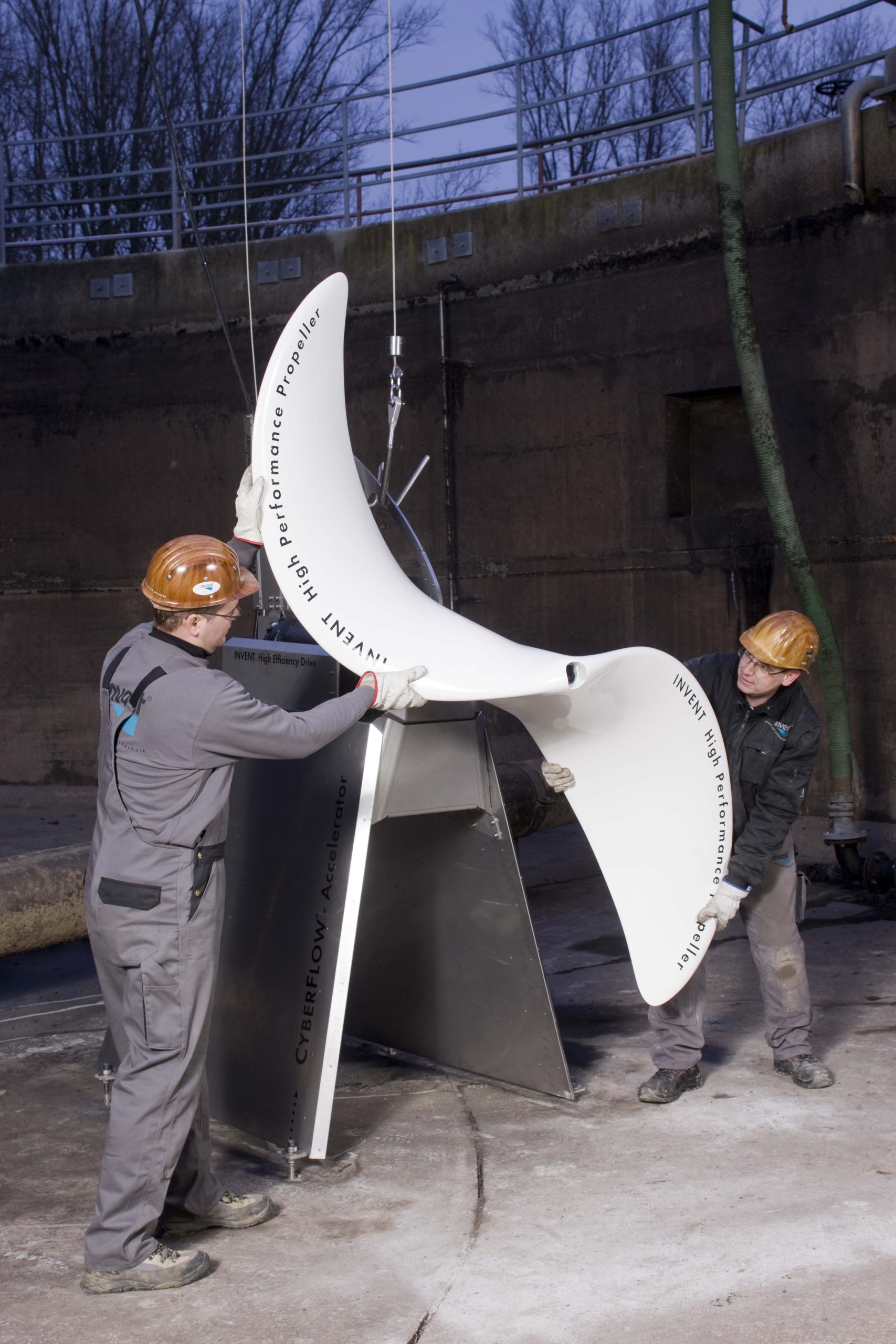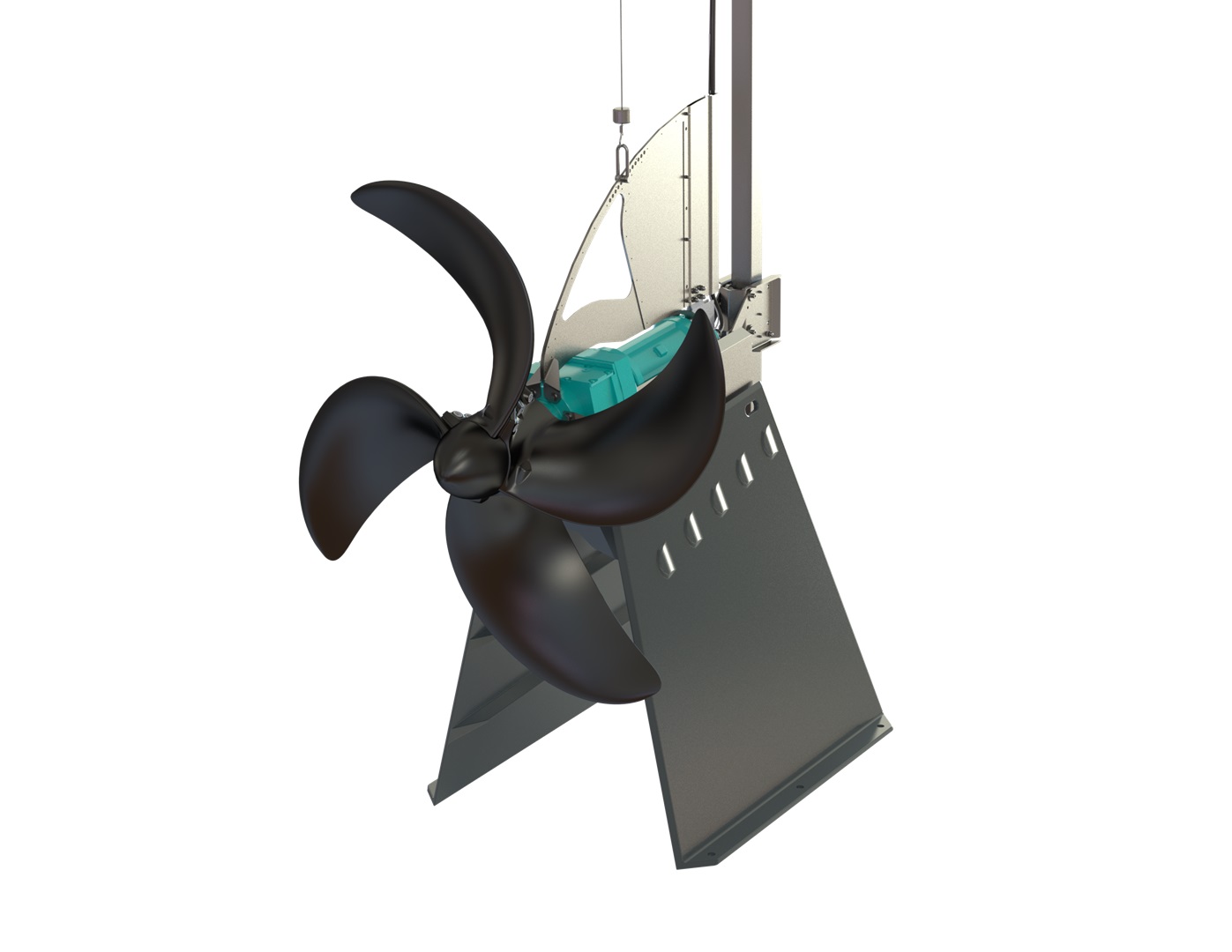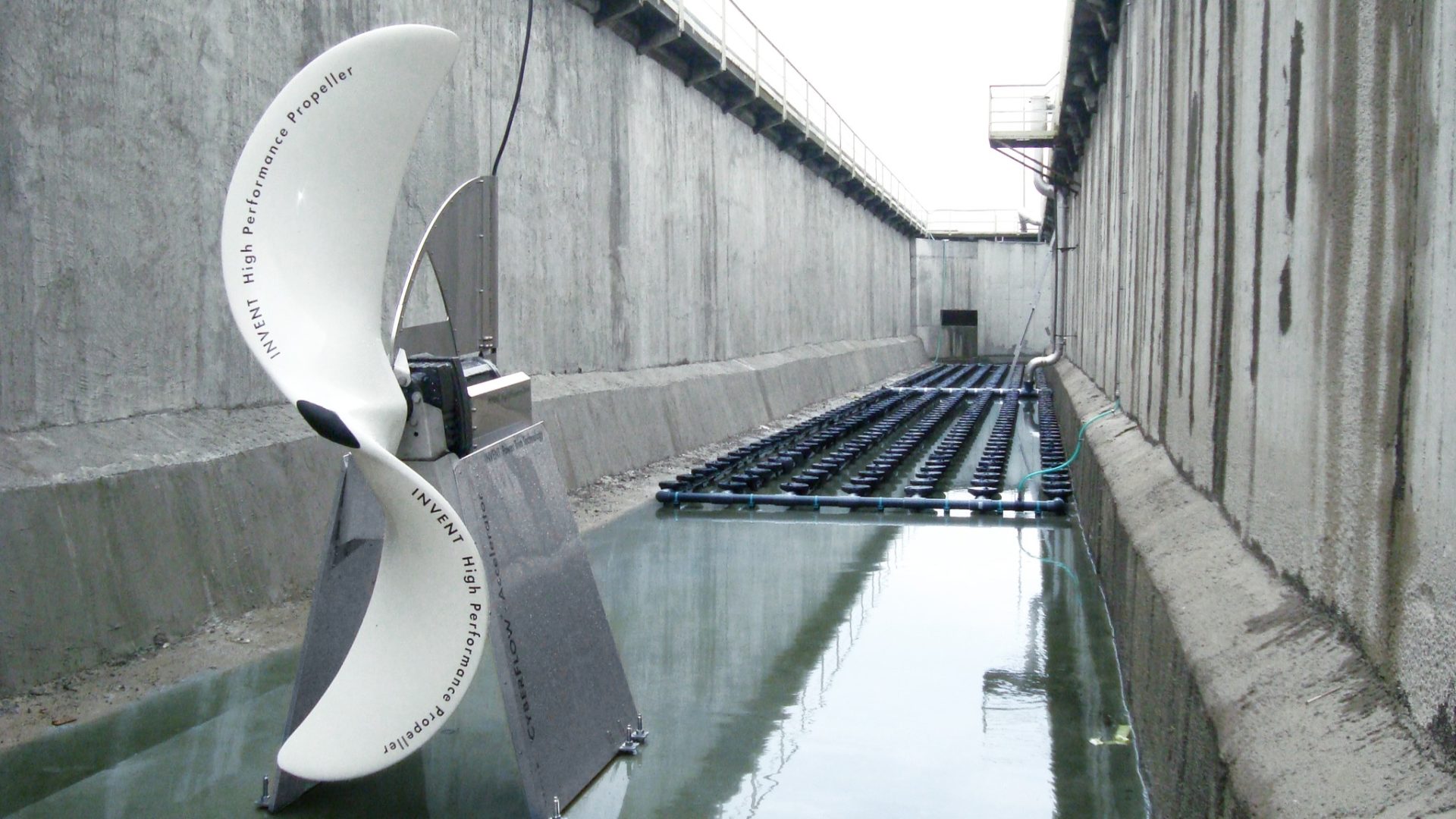
INVENT recently demonstrated their CYBERFLOW-Accelerator, which the company says is a revolutionary advancement over conventional flow generators, at this year’s IFAT event in Munich, Germany.
It has been specially developed and optimized for the most energy efficient generation of horizontal flows in applications such as biological wastewater circulation in donut, racetrack or carrousel type basins. Extensive research and development have led to efficiency improvements of up to 30% over traditional flow generators, regardless of the application.
In recirculation applications, horizontal flow generators for racetrack basins move the wastewater horizontally in a circuit and at the same time prevent sedimentation of activated sludge flocs. The CYBERFLOW-Accelerator is the first horizontal mixer for racetrack basins which has been consistently designed and optimized based on fluid mechanical considerations. In this context, the interaction of the flow with the entire machine was considered. This approach focuses on optimizing all aspects for the design and application Including installation location and position, flow direction, upstream and downstream flow and design of the base construction. In addition to the propeller design, these items play an important role in the overall level of efficiency of a horizontal flow generator.
Flow direction
Conventional flow generators possess a direction of flow where the upstream flow is on the drive side. As a result, a turbulent and swirled flow hits the propeller and consequently results in high efficiency losses for the entire unit.
The high-performance propeller of the CYBERFLOW-Accelerator is hit by a completely undisturbed upstream flow, thereby achieving much higher flow speeds with less energy input than conventional flow generators because efficiency losses due to disturbed upstream flows are avoided completely.
Vortex-free downstream flow

The integral fluid mechanical design of the CYBERFLOW-Accelerator incorporates a so called “anti-vortex” base frame design which streamlines the flow and takes out the vortex induced by the propeller movement. This effect is supported by the additional “anti-vortex” fin on the back of the power train resulting in energy recovery by converting radial and tangential velocity components into actual axial flow.
With this intelligent design, it is possible for the first time to recover energy which is otherwise lost into energy dissipation. This design feature makes a considerable difference and severely contributes to the high energy efficiency of the entire machine.
INVENT Power Trim Technology
More efficient than the horizontally positioned pump of conventional flow accelerators is to angle the drive shaft slightly so that the flow is aligned slightly upwards. This can greatly reduce friction – and therefore prevent energy-losses at the bottom of the tank. INVENT calls this alignment of the flow, “INVENT Power Trim Technology” and this design optimization alone improves efficiency by up to 10 %.
Fluid-mechanically optimized base frame
In the design of the base frame, the CYBERFLOW-Accelerator eliminates the use of standard rectangular tubes with unnecessarily high cw-values completely. Only rigid sheet metal structures with a small cross-section, minimized surface and small cw-values are used. This made it possible to create the base frame with the most streamlined design in the market.
Propeller design
The specific shape of the CYBERFLOW-Accelerator propeller design was developed and optimized in the INVENT flow laboratories in Erlangen, Germany using state-of-research facilities, measuring technology and simulation methods specifically for use in activated sludge basins in wastewater treatment. This resulted in a smooth and efficient propeller geometry.
A further aim was to find a robust, durable, light and flexible, structural mechanical design. The result was a propeller structure made of glass- and carbon fibre-reinforced plastic in a sandwich design which can be used even in the most heavy duty municipal and industrial applications.
INVENT believes this make the design superior to all conventional propeller designs in the market, irrespective of the number of blades used in the comparison propellers. INVENT uses an especially well-balanced two- and four-blade design.

Fluid mechanical laboratory
INVENT maintains a fully equipped fluid mechanical laboratory, pilot scale plants, and large scale test facilities at its headquarters in Erlangen in Germany. This enables INVENT to carry out all research and development work in-house with its own team of fluid mechanical specialists.
INVENT says the CYBERFLOW-Accelerator introduces a revolutionary overall concept, leading to efficiency improvements of up to 30%, depending on the individual case.



